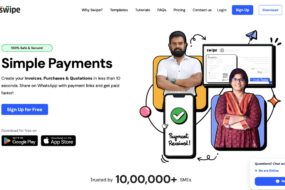
Find out how to execute a mail merge in Google Sheets and how you can easily personalize mass emails using your mass email plugin.
When you are getting started sending mass emails, one of the first things you’ll have to do is execute a mail merge. For most mass mailers, the preferred method is to perform a mail merge in Google Sheets. If you are a beginner and are wondering exactly what a mail merge is, then keep reading. We’re going to be exploring what a mail merge is, how you can use mail merge to personalize emails, and how to properly execute a mail merge in Google Sheets. Are you ready to get started?
What is a Mail Merge?
Before we can start talking about performing a mail merge in Google Sheets, we should take the time to define the process

Sending mass emails is not easy and requires a lot of steps to get set up. One of these steps is to perform a mail merge in Google Sheets. When you perform a mail merge, you are essentially importing your address list into your mass email plugin.
Your mass email plugin is the tool you will use to organize, personalize, design, and send your messages. When it comes to mass email plugins, you want to choose one that is easy to use and will work for your mass email needs. Often, these mass email plugins have a free trial feature so you can try a few before making your final decision. You can only get started with your mail merge once you’ve decided on your mass email plugin.
The second piece of the puzzle that you need to get started on your mail merge is the address list. Your address list is your Google Sheet full of addresses you want to receive your mass emails. If you haven’t yet begun work on your address list, now is the time to start. After all, you can’t send emails if you haven’t collected any addresses for recipients. Once you feel like you have enough addresses to get your campaign started, you’re ready to execute a mail merge in Google Sheets.
What Does a Mail Merge Have to Do With Personalization?
Once you complete a mail merge in Google Sheets, you can start personalizing your mass emails

When we talk about a mail merge, we are talking about inserting information from your Google Sheet into your emails. Often, this includes personal information that you collected in your address list.
When you start collecting information for your address list, you need at the very least an address and a first and last name. For basic email personalization, you should always include the first and last name of the recipient. After that, you can move on to different information categories as they suit your business and your marketing or sales strategy. A few other pieces of information you may want to add to your address list include:
- Occupation
- Gender
- Location
- Hometown
- Date of last interaction (if applicable)
- The last message sent
These are just a few of the different factors that you can use to personalize your mass emails in a way that will appeal to your selected audience. For example, you may want to personalize a sales email reaching out to a specific job position at different companies. If your email seems vague—or worse—includes an incorrect job title, your messages are liable to end up in the spam folder. That conveniently brings us to our next section—why personalization is so important for mass emails.
Why is Personalization So Important?
Without executing a mail merge in Google Sheets and personalizing your messages, your whole campaign could be a waste of time

No matter how large or small your campaign—you need to ensure every message you send is personalized. If you’re new to mass emailing, you might be wondering why exactly personalization is so important.
Luckily, there is an easy answer to your question—personalized mass emails produce far better results than messages that are not personalized. For example, if you receive a cold sales email but you can’t find anything that relates to your job or your business, then you’ll likely either delete the message or report it as spam. After all, if you didn’t see anything that was significant to you, then there’s no good reason to take a second look. You might be starting to see where we’re headed at this point.
When you can personalize your emails after performing a mail merge in Google Sheets, you can grab your audience’s attention by automatically inserting pieces of information into each message. Using your mass email tool and information collected on your address list, you can personalize every part of your message and create mass emails that instantly engage your recipients.
Now that we’ve covered what email personalization is and why it’s so important, let’s discuss how you can perform a mail merge to prepare for a successful email campaign.
How to Execute a Mail Merge in Google Sheets
Now that we know the importance of personalization, let’s detail the steps to perform a mail merge in Google Sheets

As we previously mentioned, the first steps you need to take to execute a mail merge are choosing your mass email plugin and collecting addresses. Once these steps are completed, it’s time to move on to the actual mail merge.
Step 1: Import Your Address List
First, you should go into your mass email plugin in Gmail. Then, you should find the option to import or attach your address list in your mass email plugin. Though these options will look a little different for each plugin option, all plugins will be able to import your addresses.
Step 2: Choose Your Worksheet
Once you’ve chosen the address list you are ready to merge with your emails, you need to select the individual worksheet you want to import. If your address list does not have more than one worksheet, you don’t need to worry about this step. Once the worksheet you need for your next campaign is successfully selected, it’s time to move on to the next step.
Step 3: Set Rules for Duplicate Addresses
The next step you should take is to set rules for your duplicate addresses. In most cases, you will want to tell your plugin to remove any duplicate addresses. However, there are some cases where you will want to set a rule for multiple addresses. For example, you may want to send several messages with different personalization options for the same address. If this is necessary for your campaign, you can easily adjust the setting in the plugin of your choice.
Step 4: Filter Your Addresses
After you’ve double-checked your duplicate address settings, it’s time to select the addresses you want to receive your personalized emails. If you are sending a mass email to everyone on your address list, you have to make sure that the message will apply to all of the people on your contact list. Though it isn’t necessarily wrong to send a message to your whole address list, we recommend segmenting your address list to better reach your target audience.
To choose which addresses you want to receive messages from, you can easily filter which rows you want in your Google Sheet. Using your plugin, you can filter your addresses by any factor you see fit. If you have designated a column in your sheet for “profession” then you can easily manage your campaigns based on the profession of your recipient. When you break apart your address list into smaller groups, you can more easily tailor your message to appeal to the target audience.
Step 5: Set Rules for Reporting
One of the main reasons why mass email plugins are so important for sending mass emails is their reporting capabilities. Reporting is critical for all types of email campaigns so you know how your messages are performing. After you perform your mail merge in Google Sheets, your plugin will automatically display email performance metrics in your spreadsheet.
To take advantage of this feature, you should first make sure that you have granted your plugin access to write in your Google Sheet. If permission is not granted before you set your rules, you could run into issues pulling data from your plugin. Once the permissions are taken care of, you can designate different reports that you want your plugin to automatically add to your spreadsheet. Once you’ve made the selection as to which metrics you want to be copied, your plugin will take it from there. Your plugin will have the ability to create new columns in your address list and automatically add the most updated reporting information based on how your recipients interact with each message. Then, you can use this information to plan and improve future email campaigns.
Step 6: Personalization
As we’ve mentioned several times before, personalization is key for any successful mass email campaign. Personalization is an important part of the mail merge process as you need to instruct your plugin where in your email to automatically insert personalized elements into your message. Basic personalization usually involves a person’s first and last name, but these days they likely won’t get you very far. As a rule of mass emailing, the more personalization you can include, the better! To designate which pieces of information you want and where they should be in your message, you should use the column title surrounded by curly brackets, like this: {Occupation}.
When you insert a personalization element like our example in your message, the occupation of the recipient will automatically populate as you complete your mail merge and begin sending your messages.
Step 7: Complete the Mail Merge By Sending Your Emails
The very last step to properly execute a mail merge in Google Sheets is to hit the send button from your plugin. After you’ve hit the send button, your messages will be automatically personalized and sent. If you choose to automatically update your address list, you’ll notice that your chosen metrics will begin to populate as your audience interacts with your messages. Using your mass email service, you can also schedule when you want your emails to be sent. To get the best results possible, we recommend doing a bit of research on the best times to send emails to different groups. You’ll find that there are desirable times of the day and week that will help you maximize your open rate. For example, you might want to send sales emails on a Sunday evening so that your recipient will open either that night as they prepare for the week or first thing on Monday morning. Your ideal sending time will depend on the purpose of your campaign and target audience.
What are the Most Common Questions About Executing a Mail Merge in Google Sheets?
Now that we know how to perform a mail merge in Google Sheets, let’s go over the most common questions people have about mail merge in general

Since we just threw a bunch of information at you, it is more than likely that you have some questions. Mass emailing is far from an exact science, which is why we’re answering some of the most common questions people have about performing a mail merge. Let’s get started!
Question 1: How Many Emails Can I Send?
When you send emails without a mass email plugin, each platform will have an email sending limit per 24-hour period. Unfortunately, many novice mass emailers will end up accidentally exceeding this limit—which hurts your account reputation and delivery rate. However, with the help of a mass email service, you can send more than the account limit without the fear of affecting your account reputation. Your mass email plugin will schedule out messages to avoid accidentally exceeding the daily send limit. It is important to note that the limit is determined by the number of recipients rather than the number of messages.
Question 2: How Does Reporting Work?
We touched briefly on reporting when we discussed automatic updates to your Google Sheet. However, to look at the big picture you’ll need to pull a full report from your plugin. Most plugins come with tracking and reporting features built-in, so all you need to do is wait a few days after your messages are sent and pull your report. Depending on the nature of your campaign, there are different metrics you’ll want to consider. You can then use these reports to establish email flows for more effective audience engagement.
Question 3: Can I Include CC or BCC Addresses for Each Recipient?
Yes, you can include CC or BCC addresses. All you have to do is add these addresses to your Google Sheet the same way that you would any other information category. Be sure that you name the columns in your sheet CC and BCC. Once your spreadsheet is ready to go, your plugin will automatically insert these addresses into all of the applicable messages during your mail merge.
Question 4: Should I Schedule My Messages?
Yes, you absolutely should schedule your messages. Beyond sending your messages at the best time possible for maximum open rate, scheduling your messages ahead of time makes your life easier. Many are cautious to schedule emails to send in advance as they may not be in the office or around a computer at the exact sending time—which is totally normal. But, you can rest assured that your mass email plugin will remember to send your messages at the correct time. It is not required that you are logged on or that you have your Google Sheet up on the screen.
Question 5: Should I Test My Emails?
This is possibly the most important question to ask when you are about to execute a mail merge—and the answer is yes. You must test every message before you hit send. Using your mass email service, you can send a test email to yourself, a coworker, or a friend to get an extra set of eyes on your message. If there are any mistakes or formatting issues in the email, you can quickly remedy the problem instead of sending out hundreds of glitchy messages. When you get the OK that your messages are loading properly on both desktop and mobile devices, you’re ready to hit send!
Executing a successful mail merge in Google Sheets can be difficult, but it doesn’t have to be! With the right mass email plugin and a bit of research, you can start crafting relevant and compelling messages your audience wants to open.














